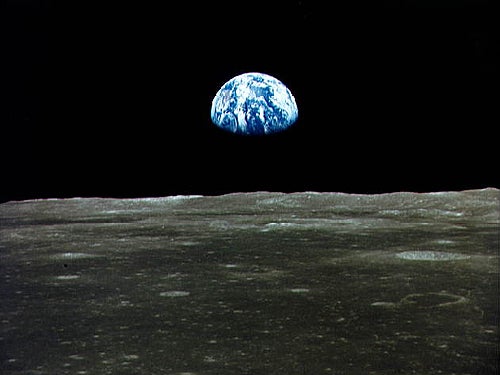A team of scientists has found that terrestrial planets such as the Earth and Mars may have remained molten in their early histories for tens of millions of years. The findings indicate that the two planets cooled slower than scientists thought and a mechanism to keep the planet interiors warm is required.
These new data, released by scientists from NASA’s Johnson Space Center (JSC) and the Lunar and Planetary Institute (LPI), both in Houston, and the University of California, Davis (UCD), reveal that the early histories of the inner planets in the solar system are complex and involve processes no longer observed. Evidence of these processes has been preserved in Mars, while it has been erased in Earth. So Mars is probably the best opportunity to understand how Earth formed.
Scientists think that early crust formation alone cannot account for the slow cooling magma ocean seen in large planets. This new evidence instead implies that Mars, at one time, had a primitive atmosphere that acted as the insulator.
“The primitive atmosphere was composed mostly of hydrogen left over from accretion into a rocky planet, but was removed, probably by impacts, about 100 million years after the planet formed,” says Vinciane Debaille, co-author of the study.
Debaille and her colleagues performed precise measurements of neodymium isotope compositions of nine rare Martian meteorites called shergottites using mass spectrometers at JSC and UCD. Shergottites, named after the first-identified meteorite specimen that fell at Shergotty, India in 1865, are a group of related meteorites from Mars composed primarily of pyroxene and feldspar.
The scientists examined shergottites because their large range in chemical compositions is thought to be a fingerprint of the formation of their deep sources very early in the history of Mars.
“These rocks were lavas that were made by melting deep in Mars and then erupted on the surface,” says Alan Brandon, co-author of the study. “They were delivered to Earth as meteorites following impacts on Mars that exhumed them and launched them into space.” Mars meteorites are a treasure chest of information about that planet and have been the focus of extensive research by scientists.
The metallic element samarium has two radioactive isotopes that decay at a known rate to two daughter neodymium isotopes. By precisely measuring the quantities of neodymium isotopes, Debaille was able to use these two radiometric clocks to derive the times of formation of the different shergottite sources in the Martian interior.
“We expected to find that their sources all formed at the same time,” says Debaille. “But what we found instead was that the shergottite sources formed at two different times. The oldest formed at 35 million years after the solar system began to condense from ice and dust into large planets about 4,567 million years ago. The youngest formed about 110 million years after the solar system began to condense.”
Debaille and her colleagues found that the scenario that best fits the data is one where a global-scale magma ocean formed from melting in Mars during the final stages of accretion and then slowly solidified over this time period.
“The most recent physical models for magma oceans suggest they solidify on timescales of a few million years or less, so this result is surprising,” says Brandon. “Some type of insulating blanket, either as a rocky crust or a thick atmosphere, is needed as an insulator to have kept the Martian interior hot.”










